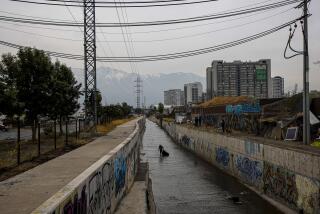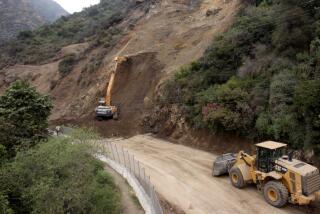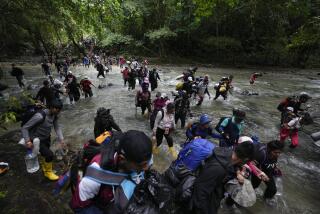Chile’s Last Frontier Isolated, Unspoiled : Road Brings 20th Century to Patagonia
PUERTO CISNES, Chile — Eugenia Pirzio-Biroli remembers what it was like here before the highway came to Chilean Patagonia, an extremity of the Americas so inhospitable that the Indians never bothered to settle it.
People got around only by boat on rivers and icy canals or by horseback through dense rain forests.
“This was no man’s land, and the law of the strongest prevailed,” Pirzio-Biroli, 80, said. That was 25 years before the highway.
An Italian immigrant, she came here with her late Chilean husband and two grown sons. They were one of four families in Puerto Cisnes in 1957.
Judge Killed
“Just after we arrived,” she said, “some rustlers killed a judge because he tried to stop an embarkation of stolen animals.”
Today, Patagonia is still Chile’s last frontier. But the Southern Highway, a two-lane gravel road that is the military government’s most ambitious project, is changing life in the little settlements of cattle ranchers and fishermen.
As mayor of Puerto Cisnes, Pirzio-Biroli presides over a peaceful village of 1,089 people. They have running water, a hospital with a permanent doctor, a busy shipyard and a school for 400 children.
They have electricity from 8 a.m. to noon. But next year, the mayor proudly told a visitor, a new plant will light Puerto Cisnes around the clock.
Most of this progress, she said, has come since a spur of the highway reached town four years ago, connecting it with every major settlement in the vast frontier provinces of Palena and Aysen.
Elsewhere along the highway’s completed stretches, settlers who once measured their journeys to the next town by the number of days it took to row there in a boat now marvel at the 25-m.p.h. speed that Jeeps and trucks manage over the rough, winding road.
The last 446 miles of the 700-mile road network are expected to be completed by 1989. They will link up with the Pan American Highway, which runs--except for a never-completed section in a Panama jungle area--all the way to the United States.
“The highway is a blessing of God,” said Aurelia Schilling, a cattleman’s widow and longtime resident in La Junta, one of eight towns on the completed stretch of the highway’s main trunk.
Since 1982, two new towns have sprung up on the highway.
Just off the road, 80 families are being settled on land they are buying from the government under 15-year credit agreements. To qualify, they must get state approval for their plans to develop farming, fishing or forestry enterprises.
Jeremias Araya, 37, came from Santiago a year ago with his brother and a brother-in-law to settle 9,143 acres they are buying for the equivalent of $45,000. Among other things, the family will cultivate bees for honey.
“These are virgin lands that you have to open up with a machete,” Araya told a reporter traveling the road. “Here you don’t have to worry about your paycheck or the smog.
“At first, the cold and rainy climate bothered me. But these inconveniences are offset by the tranquility, once you get used to it.”
Natural Beauty
People traveling the road can stop to fish for huge salmon in clear streams or gaze at snowy Andean peaks, high waterfalls and timeless glaciers.
They can drive a whole day without seeing another vehicle. But travelers are advised to heed the 25-m.p.h. speed limit because of rock slides, mud slides and one-lane sections with steep drop-offs. In some parts, it rains 28 days a month, and the annual rainfall is 13 feet.
More to Read
Sign up for Essential California
The most important California stories and recommendations in your inbox every morning.
You may occasionally receive promotional content from the Los Angeles Times.










